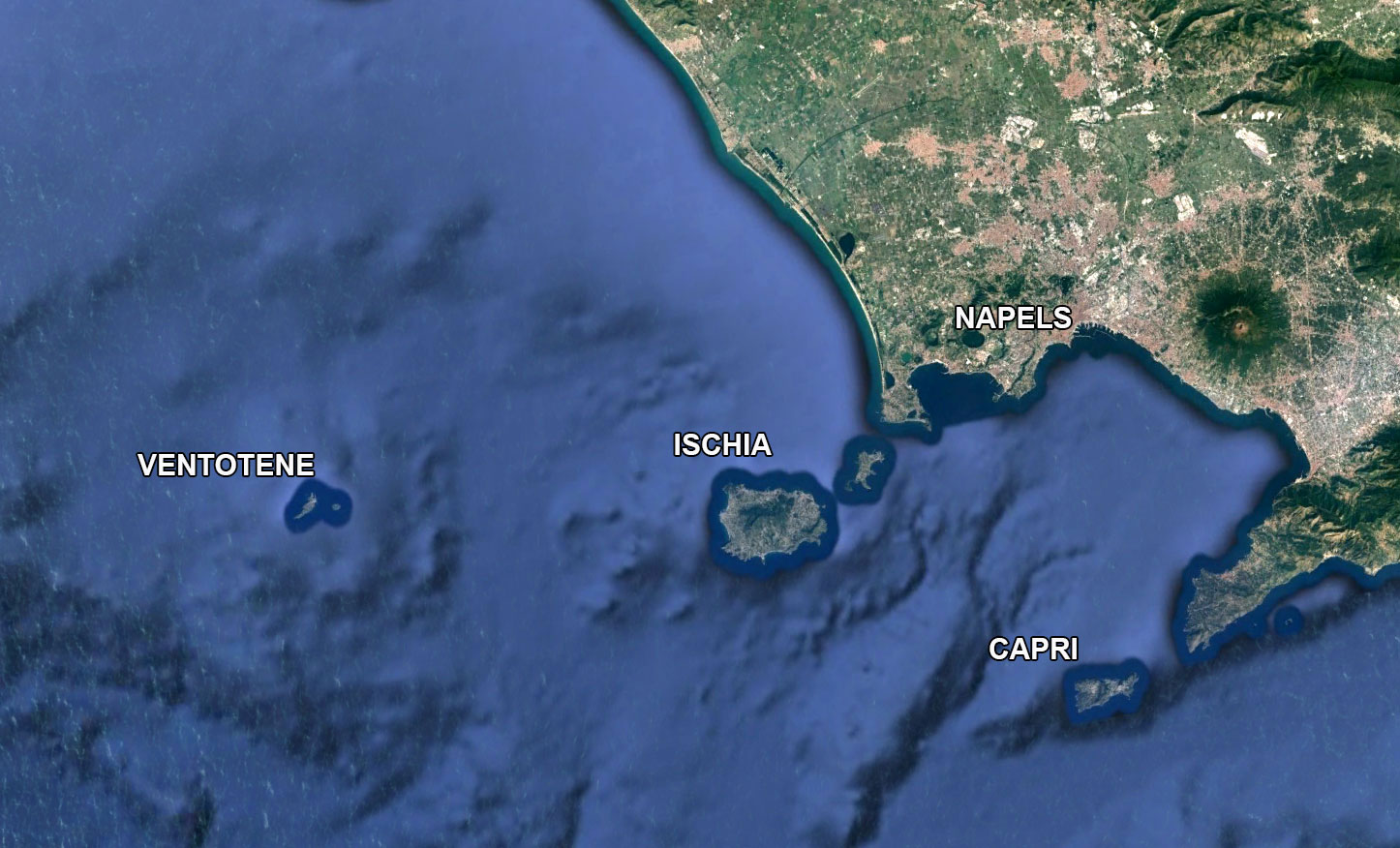 Report by Gerard Huissen
Report by Gerard Huissen
Recently I discovered a video about an underwater project in 2009 for the coast of the island of Ventotene, Italy.
Although Ventotene, the Roman Pandateria, is no part of our list with important Roman ports I thought it’s worthwhile telling a story about, for three reasons:
1. The underwater project is about the research for five sunken Roman ships. Although almost nothing from the ships has been preserved, the cargoes remained almost completely intact.
2. Because all five ships had a different cargo their story connects well with our articles about the trade routes. 3. Ventotene itself has a lot to tell.
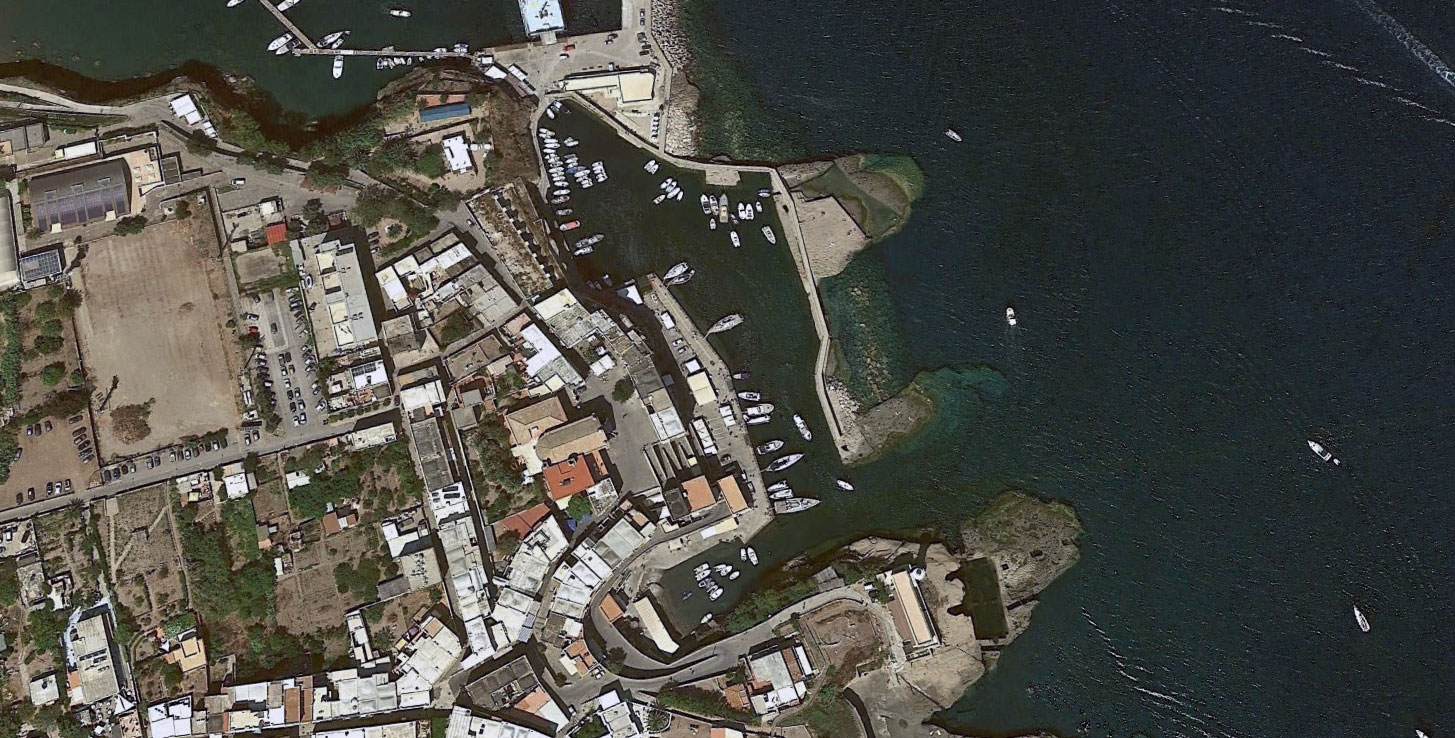
The Island
Todays island of Ventotene is one of the Pontine Islands in the Tyrrhenian Sea about 46 kilometres off the coast of Naples. In Roman times the city was called Pandateria after the Greek Πανδατερία.
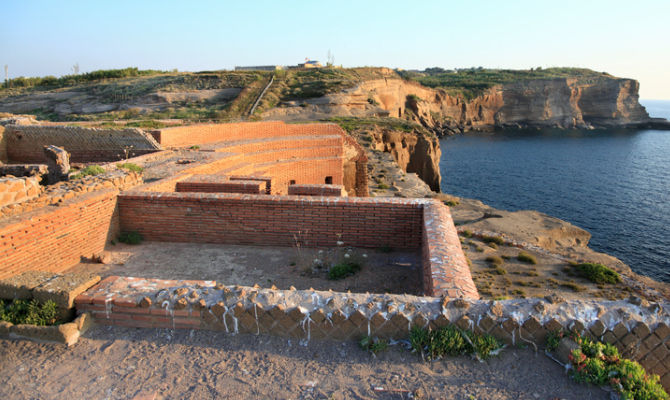
Under the Julius/Claudius dynasty the island was used as a place of exile mainly for women. The most important exile was Augustus’ own daughter Iulia Caesaris Maior who stayed on the island, together with her mother Scribonia, for five years. Scribonia accompanied her daughter voluntarily.
Augustus built a villa for this purpose without the luxury she was accustomed to at Rome.
Also Augustus’ granddaughter, Agrippina the elder, was exiled to the island by the emperor Tiberius. So was the youngest daughter of Agrippina the elder, Iulia Livilla. She was exiled twice: the first time by her brother the emperor Caligula and the second time by her uncle the emperor Claudius. Also the first wife of Nero, Claudia Octavia, was send to Pandateria in 62 AD and then executed on the orders of her husband.
Many parts of the villa of Augustus’ daughter Iulia and other villas remained.
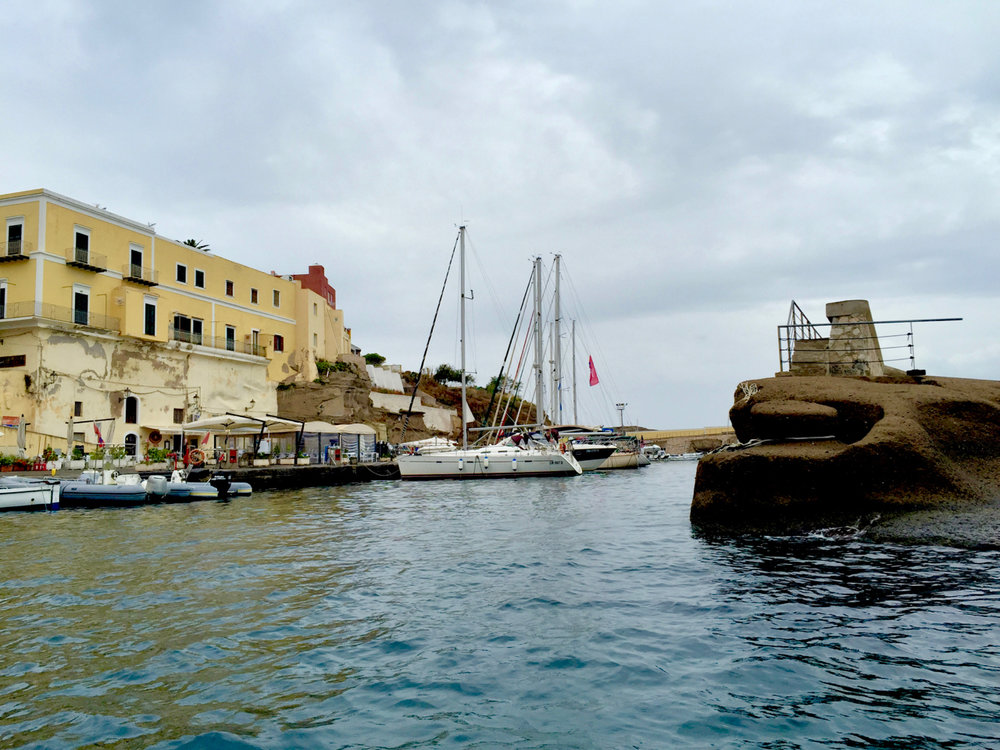
There are no natural sweet water sources on the island, so Augustus let build an extensive rainwater catchment system of channels, cisterns and an aqueduct.
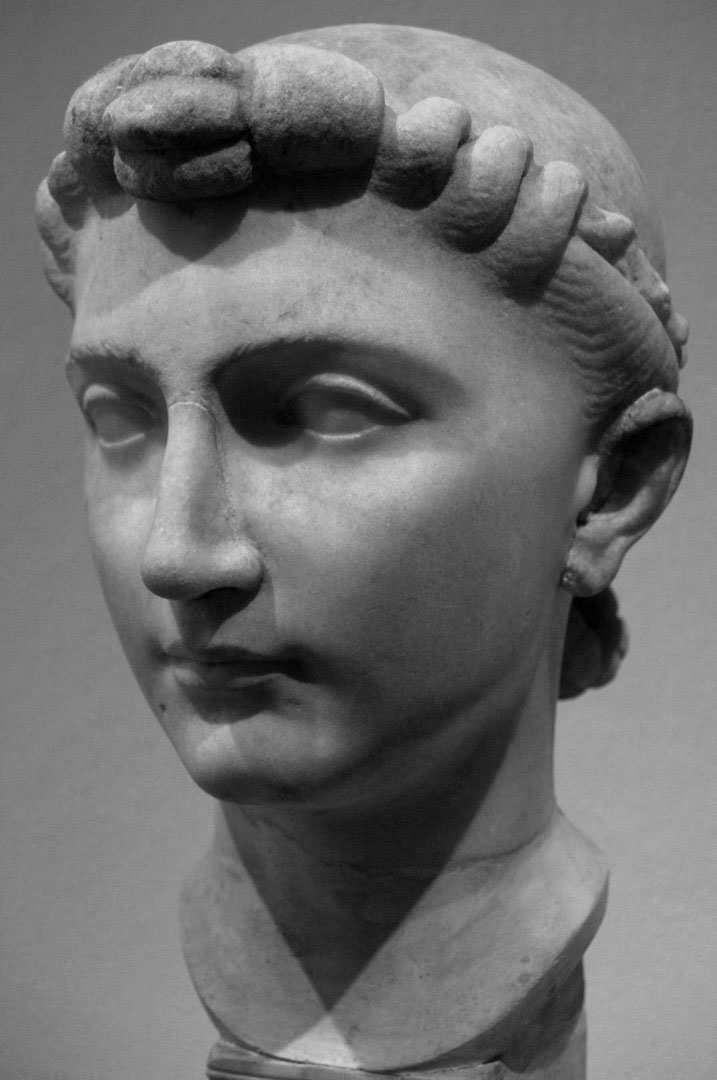
Iulia Maior
Iulia, Augustus’ only child was a daughter from his second marriage with Scribonia of which he divorced on the day Iulia was born.
After several marriages Iulia was forced by her father, who was married in the meantime with Livia, to marry Tiberis, the son of Livia. A couple of years later it turned out that Iulia didn’t take marriage too seriously en had started an obscure relationship with Iulius Antonius, a son of the former enemy of her father, Marcus Antonius. Hereby she had broken the law which her father himself had created, the Lex Iulia de adulteriis coercendis, in short Lex Iulia from 17 BC.
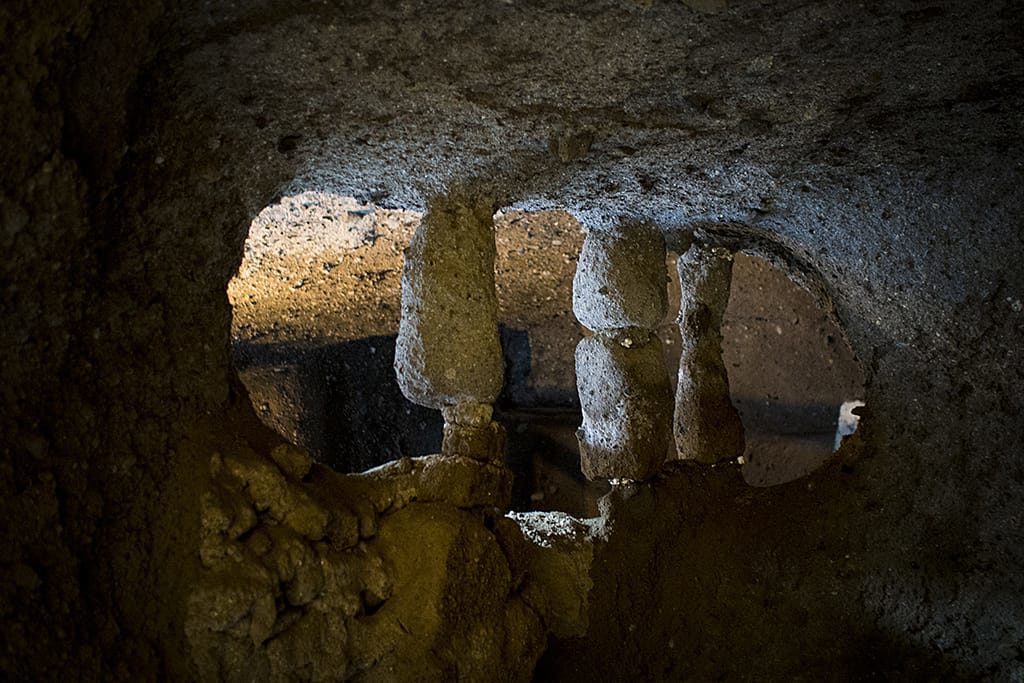
In the year 2 of our era both were punished by this law: The forfeit of their possesions and dummodo in diversas insulas relegentur or in English: exile to seperated islands. Julius committed suicide and Iulia was exiled to Pandateria accompanied by her mother. They stayed there for five years and then she was allowed to stay in less bad circumstances in Southern Italy. There she lived another eleven years completely isolated. Iulia survived all her children and died of starvation in the year 14 AD.
The film
The video is about a five-days underwater expedition for the coast of Ventotene to 5 sunken Roman ships in 2009.
This very interesting film is a report of the different diving sessions and a female archaeologist tells you on the island, by using animation, the story of the villa of Iulia and the ancient drink water system.
Further it shows the use of the so-called ‘mortarium’ a mass product used in every kitchen in antiquity and found back in huge quantities as cargo of one of the wrecks.
As a result of another found cargo, this time with amphorae for garum, the ship’s cook tries to prepare the famous Roman fish sauce himself.
- notes:
- 1: foto: http://www.archart.it/villa-giulia-a-ventotene-la-capacita-umana-di-far-soffrire-anche-in-paradiso.html
- 2: foto: http://www.peregrinusduo.com/blog/2017/6/4/into-a-roman-port
- 3: foto: Miguel Hermoso Cuesta Berlín, Altes Museum
- 4: foto: ASD OCEANIA TEAM C.F: 97622250583
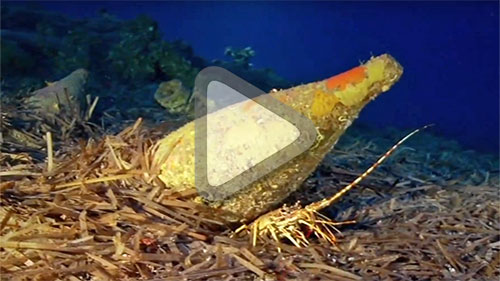






 We are committed to providing versions of our articles and interviews in several languages, but our first language is English.
We are committed to providing versions of our articles and interviews in several languages, but our first language is English.